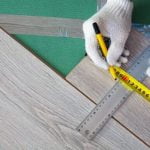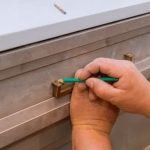Are you tired of dropped calls and slow internet speeds at home? In today’s connected world, a strong cell signal is more important than ever. Whether you use your phone for work, staying in touch with loved ones, or simply browsing the web, a weak signal can be frustrating and inconvenient. In this article, we will discuss how to improve the cell signal at home and ensure that you have reliable connectivity whenever you need it.
Assessing the current signal strength is the first step in addressing any issues with your cell signal. By understanding how to check the signal strength in different areas of your home, you can pinpoint where the problem areas are and begin to find solutions. We will also explore the common factors that can interfere with cell signal, helping you identify potential causes of weak signal in your home.
From signal boosters to Wi-Fi calling, there are various solutions available for improving cell signal at home. Additionally, we will discuss DIY methods for improving signal strength without having to spend a fortune. By comparing different signal boosting devices and optimizing your smartphone settings, you can take proactive steps to ensure that you have a strong and reliable cell signal at home. Stay tuned as we delve into these topics in more detail throughout this article.
Assessing the Current Signal Strength
Having a strong cell signal at home is essential for staying connected and being able to make calls, send texts, and access data on your smartphone. To ensure that you have good cell coverage throughout your home, it’s important to assess the current signal strength in different areas. This will help you identify areas with weak signal so that you can take steps to improve it.
One way to check the signal strength in different areas of your home is by using your smartphone. Most smartphones have a built-in feature that allows you to see the signal strength as measured in decibels (dBm).
You can simply walk around your home while checking your phone to see how the signal strength varies in different rooms and areas. Keep in mind that a signal strength of – 50 dBm to – 70 dBm is considered excellent, while anything below – 100 dBm is considered poor.
Additionally, there are various mobile apps available for both Android and iOS devices that can help you measure and map out the cellular signal strength in your home. These apps provide detailed information about signal quality and can help you pinpoint problem areas where the signal is weak. By utilizing these tools, you can get a clear understanding of where the weak spots are in your home and determine how to improve the cell signal in those areas.
In some cases, certain smartphones may not accurately display the actual cellular signal strength due to differences in hardware or software. Therefore, it’s important to use multiple methods for checking the cell signal strength at home. By doing so, you can gain a comprehensive understanding of where improvements need to be made and take appropriate actions to enhance your cell reception.
| Signal Strength | Interpretation |
|---|---|
| 50 dBm to – 70 dBm | Excellent |
| Below – 100 dBm | Poor |
Identifying Potential Causes of Weak Signal
There are several potential causes of weak cell signal in your home, and understanding these common factors is essential in finding effective solutions to improve the signal. One of the main factors that can interfere with cell signal is the distance from the nearest cell tower. If you live in a rural area or in a location with limited cell tower coverage, you are more likely to experience weak signal strength at home.
Additionally, building materials can also have a significant impact on cell signal. Materials such as concrete, metal, and low-emissivity glass can block or weaken cellular signals, leading to poor reception indoors.
Another common factor that can contribute to weak cell signal is environmental interference. This includes natural elements such as trees, hills, and bodies of water that may obstruct the path of cellular signals to your home. Moreover, electronic interference from household appliances and devices like microwaves, cordless phones, and baby monitors can also disrupt cell signal reception.
Furthermore, network congestion can result in poor cell signal quality at home, especially during peak usage times when many people are trying to connect to the same network simultaneously. Understanding these common factors that interfere with cell signal is crucial in finding effective solutions for improving the overall signal strength at home.
| Factors | Description |
|---|---|
| Distance from Cell Tower | Living in rural areas or locations with limited tower coverage affects signal strength |
| Building Materials | Materials such as concrete and metal can block or weaken cellular signals indoors |
| Environmental Interference | Natural elements like trees and hills, along with electronic interference from household devices can disrupt cell signal reception |
Solutions for Improving Cell Signal
If you’re experiencing poor cell signal at home, there are several solutions that can help improve your reception. From signal boosters to Wi-Fi calling, there are a variety of options to consider. In this section, we’ll explore different methods for improving cell signal and discuss the pros and cons of each approach.
Signal Boosters
One popular option for improving cell signal at home is using a signal booster. These devices work by amplifying the existing signal from your carrier and rebroadcasting it within your home. Signal boosters come in various forms, including plug-and-play units and more complex systems with external antennas. They can be a highly effective way to enhance cell reception in areas with weak or no signal.
Wi-Fi Calling
Another option for improving cell signal at home is utilizing Wi-Fi calling. Many smartphones now offer the ability to make calls over a Wi-Fi network, which can be especially useful in areas with poor cellular coverage. By connecting to your home’s Wi-Fi network, you can make and receive calls using the internet instead of relying solely on cellular signal.
External Antennas
Installing an external antenna can also help improve cell signal at home. These antennas are typically mounted outside of the building and connected to a cellular booster or other device inside the home. By capturing the outside signal and bringing it into your home, external antennas can be an effective solution for boosting cell reception.
By exploring these different options for improving cell signal at home, you can find the best solution for your specific needs. Whether you opt for a signal booster, utilize Wi-Fi calling, or install an external antenna, taking proactive steps to enhance your cell reception can greatly improve your overall communication experience within your home environment.
DIY Methods for Improving Signal
Placement of Your Router
One easy and cost-effective way to improve your cell signal at home is by strategically placing your router or modem in an elevated position. Placing it in a central location within your home can help distribute the signal more evenly. Additionally, keeping it away from walls, metal objects, and other electronic devices can reduce interference and improve the overall signal strength.
Use of Signal-Reflecting Materials
Another DIY method for improving cell signal at home is using signal-reflecting materials. These materials can help redirect and amplify the existing signal, thus increasing its strength. Examples of such materials include aluminum foil or specialized signal-reflecting sheets designed for this purpose. By strategically placing these materials behind your router or in areas with weak signal, you may see an improvement in your cell reception.
Optimizing Your Home’s Layout
Reorganizing your furniture and home layout can also have a positive impact on your cell signal strength. By reducing physical barriers, such as large pieces of furniture or thick walls, you can create a more open path for the signal to travel through. This simple adjustment can potentially lead to a stronger and more reliable cell connection throughout your home.
By implementing these DIY methods, you can make significant improvements to the cell signal at home without spending a fortune on expensive equipment or professional installation services. Understanding how to improve the cell signal at home with these simple yet effective techniques can result in better call quality, faster data speeds, and overall improved connectivity experiences within your living space.
Comparing Different Signal Boosting Devices
When it comes to improving cell signal at home, there are various signal boosting devices available on the market. These products can help amplify the existing cell signal, resulting in better coverage and clearer calls. Here is a detailed look at some popular signal boosting devices and their effectiveness:
- Signal Boosters: Signal boosters, also known as cell phone boosters or amplifiers, work by capturing the existing weak signal, amplifying it, and then rebroadcasting the enhanced signal within your home. These devices consist of an external antenna to capture the outside signal, an amplifier to boost the signal, and an internal antenna to rebroadcast the stronger signal inside your home.
- Femtocells: Femtocells, also known as microcells or network extenders, are compact cellular base stations that connect to your internet router. These devices create a small cell zone inside your home, providing improved cell reception for voice and data.
- Wi-Fi Calling: Many smartphones now support Wi-Fi calling, which allows you to make and receive calls over a Wi-Fi network instead of a cellular network. This can be especially helpful if your home has poor cellular reception but a strong Wi-Fi connection.
It’s important to consider the specific needs of your home when choosing a signal boosting device. Factors such as the size of your home, the strength of the outside signal, and your internet connection will all influence which product is most effective for you. Additionally, it’s essential to ensure that any device you choose is compatible with your carrier and smartphone.
Before making a purchase, research different products and read reviews from other users to gauge effectiveness. Keep in mind that while these devices can greatly improve cell signal at home, they may not completely solve all coverage issues in areas with extremely weak signals.
By comparing different signal boosting devices and understanding their effectiveness, you can make an informed decision on how to improve the cell signal at home based on your specific needs and circumstances.
Optimizing Your Smartphone Settings
When it comes to improving cell signal at home, optimizing your smartphone settings can make a significant difference. By leveraging your phone’s settings, you can maximize signal reception and ensure that you always have a strong and reliable connection. Here are some tips for optimizing your smartphone settings to improve your cell signal at home:
1. Enable Wi-Fi calling: Many smartphones have the option to enable Wi-Fi calling, which allows you to make and receive calls over a Wi-Fi network instead of using your cellular connection. This can be especially useful if you have poor cell signal at home, as it provides an alternative way to stay connected.
2. Update your software: Keeping your smartphone’s software up to date is important for optimizing its performance, including signal reception. Software updates often include improvements to signal processing and connectivity, so make sure to regularly check for and install any available updates.
3. Adjust network settings: Depending on your phone model, you may have the option to manually select a preferred network type (such as 4G or LTE) or enable data roaming. Experimenting with these settings can help improve signal reception in areas with weak coverage.
In addition to these smartphone settings, there are also external factors that can impact signal strength at home such as distance from the nearest cell tower, building materials, and network congestion in your area. By optimizing both your smartphone settings and considering these external factors, you can greatly improve the cell signal at home without having to spend a fortune on expensive equipment or services.
Troubleshooting Common Issues
Are you tired of dropped calls and slow data speeds at home? If so, you’re not alone. Many people struggle with poor cell signal inside their homes, which can be frustrating and inconvenient. In this section, we will address some common issues that may be affecting your cell signal and provide solutions to help you improve it.
One common issue that can affect cell signal at home is the presence of obstacles such as thick walls, metal roofing, or other construction materials that can interfere with the signal. Another common problem is distance from the nearest cell tower, which can result in weaker signal strength. Additionally, electronic devices and appliances within your home can also cause interference with your cell signal.
So, how can you improve the cell signal at home? One solution is to invest in a signal booster, which amplifies the existing signal and extends its coverage within your home.
Another option is to use Wi-Fi calling, which allows you to make calls and send texts over a Wi-Fi network instead of relying solely on your cellular connection. Additionally, installing an external antenna on the exterior of your home can help capture a stronger cell signal and bring it indoors.
In addition to these solutions, there are also some DIY methods that you can try to improve your cell signal without spending a fortune. For example, simply repositioning your router or moving closer to a window can sometimes make a noticeable difference in signal strength. By exploring these different options and troubleshooting common issues, you can take steps towards achieving a strong and reliable cell signal at home.
Conclusion
In conclusion, ensuring a strong cell signal at home is essential for staying connected and being able to make and receive calls, send texts, and use data services without interruption. By assessing the current signal strength in different areas of your home and understanding the potential causes of weak signal, you can take proactive steps to improve your cell signal.
There are various solutions available for improving cell signal at home, including signal boosters, Wi-Fi calling, external antennas, and DIY methods such as repositioning your router or using a femtocell. These options provide flexibility for addressing specific areas of weak signal and can be tailored to fit your budget and needs.
When considering how to improve the cell signal at home, it’s important to also optimize your smartphone settings for maximum signal reception. This includes enabling Wi-Fi calling if available, updating your phone’s software, and ensuring that you are connected to the strongest available network. By leveraging these tips and utilizing the appropriate tools, you can significantly enhance your home’s cell signal strength and enjoy seamless connectivity.
Frequently Asked Questions
How Do I Boost My Cell Signal at Home?
Boosting your cell signal at home can be done by positioning your phone near a window, using a cell signal booster or repeater, switching carriers if necessary, or utilizing Wi-Fi calling. These methods can help improve signal strength within your home.
How Can I Make My House Signal Stronger?
To make the signal in your house stronger, you can try repositioning your router to a central location, using a mesh Wi-Fi system to cover dead zones, minimizing obstructions like walls and electronic devices, or upgrading to a higher-powered router for better coverage.
How Can I Improve My Cell Phone Signal Strength?
Improving your cell phone signal strength can be achieved by updating your phone’s software, switching to a carrier with better coverage in your area, enabling Wi-Fi calling when at home or work, reducing background apps that consume data, and using an external antenna or signal booster for rural areas with weak signals.

I’m thrilled to have you here as a part of the Remodeling Top community. This is where my journey as an architect and remodeling enthusiast intersects with your passion for transforming houses into dream homes.





